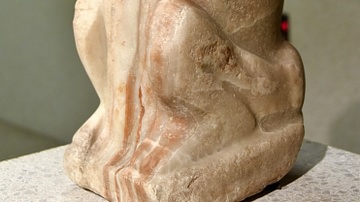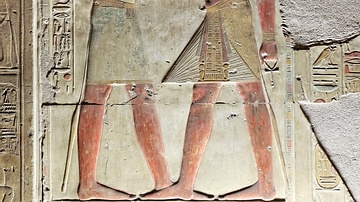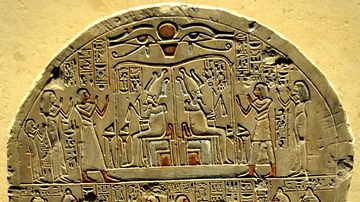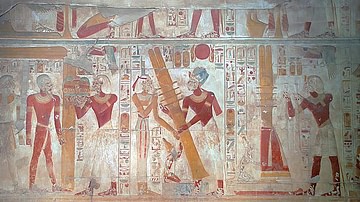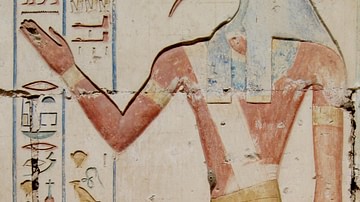Illustration
A pharaoh was known primarily by his throne name. This was traditionally a statement about his divine father, the sun-god Ra, so all cartouches with throne names display a sun-god at the top. A king's birth name was the only name he had already as a prince and is preceded by the epithet "son of Ra". Rulers deemed unimportant or illegitimate, including ruling queens, have been omitted from this list.
This section deals with the 18th Dynasty, where 3 cartouches are shown. On the right (between the 2 next cartouches, not shown here), the list omitted Hatshepsut, a queen who had ruled as a "king". On the left ,between the far left cartouche and the next one (not shown), the list omits 4 rulers associated with the "heretic" Amarna Period; Amenhotep IV/Akhenaten, Smenkhkara, Tutankhamun, and Ay. 19th Dynasty, reign of Ramesses II, circa 1279-1213 BCE. From the temple of Ramesses II at Abydos, Egypt. (The British Museum, London).
About the Author
Cite This Work
APA Style
Amin, O. S. M. (2016, July 18). King-list of Egypt, Detail of the 18th Dynasty. World History Encyclopedia. Retrieved from https://www.worldhistory.org/image/5367/king-list-of-egypt-detail-of-the-18th-dynasty/
Chicago Style
Amin, Osama Shukir Muhammed. "King-list of Egypt, Detail of the 18th Dynasty." World History Encyclopedia. Last modified July 18, 2016. https://www.worldhistory.org/image/5367/king-list-of-egypt-detail-of-the-18th-dynasty/.
MLA Style
Amin, Osama Shukir Muhammed. "King-list of Egypt, Detail of the 18th Dynasty." World History Encyclopedia. World History Encyclopedia, 18 Jul 2016. Web. 14 Apr 2025.



